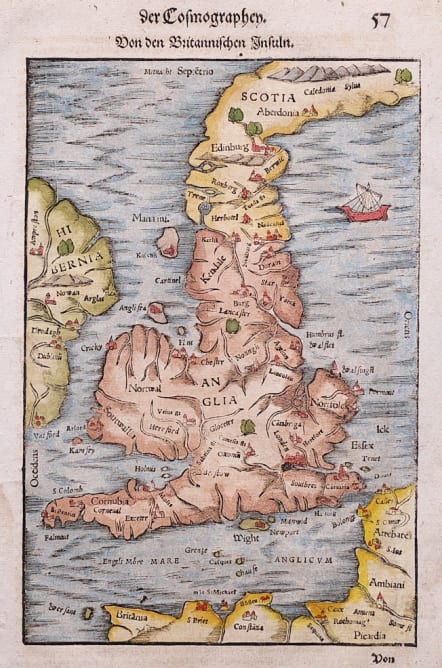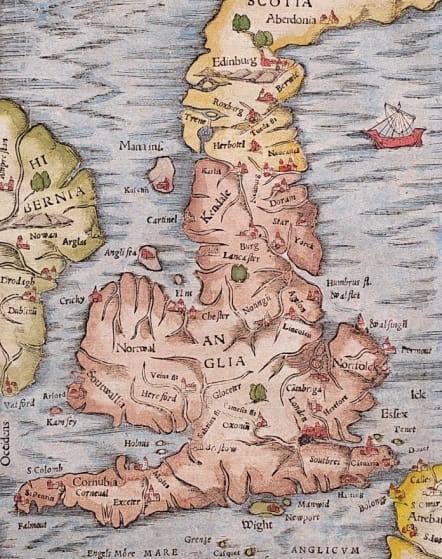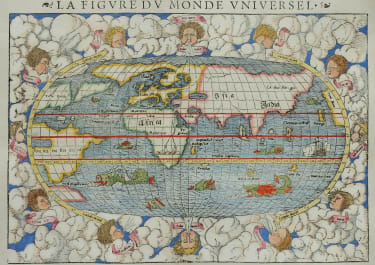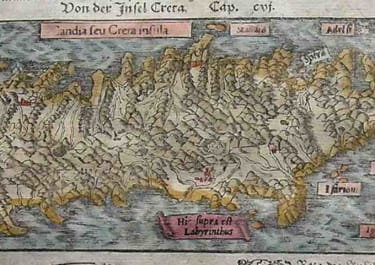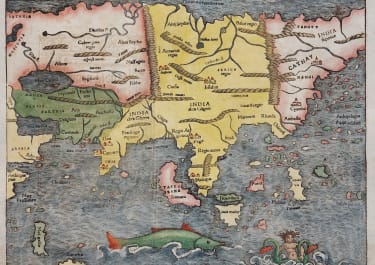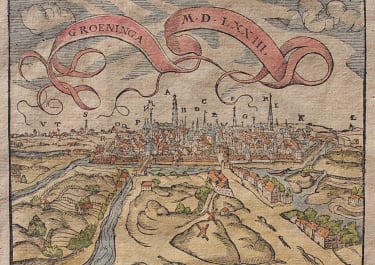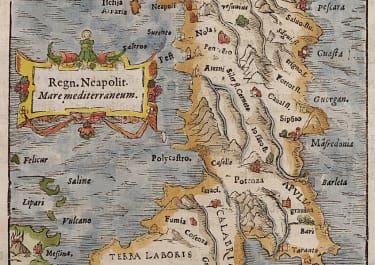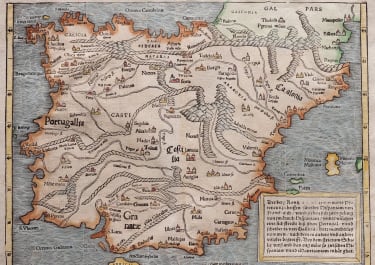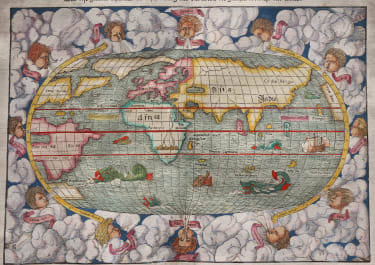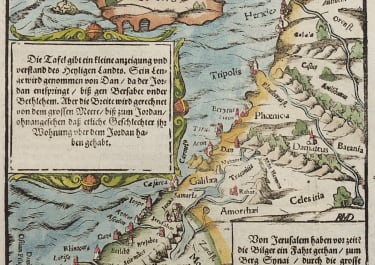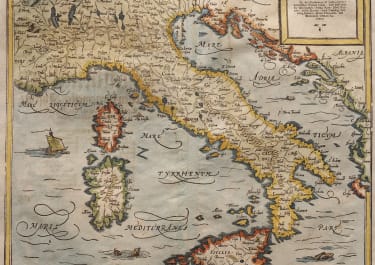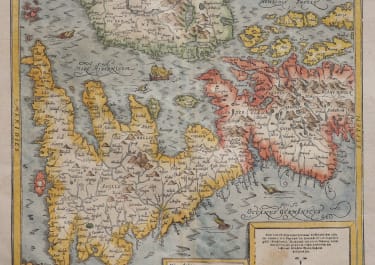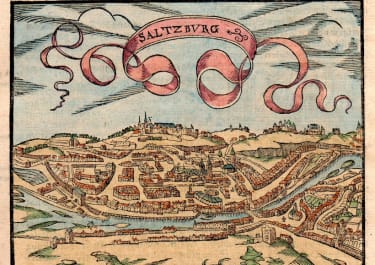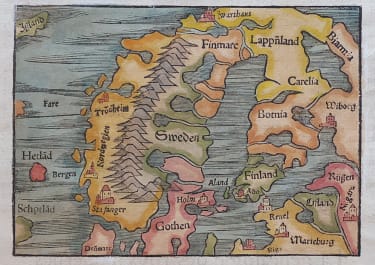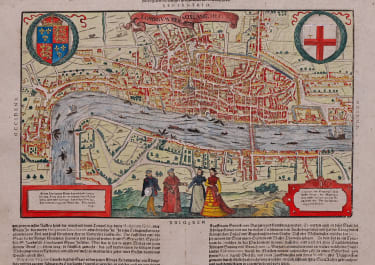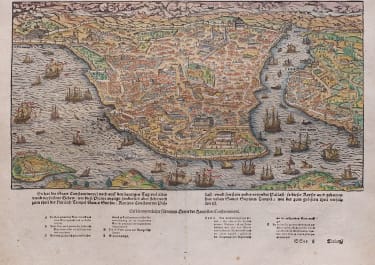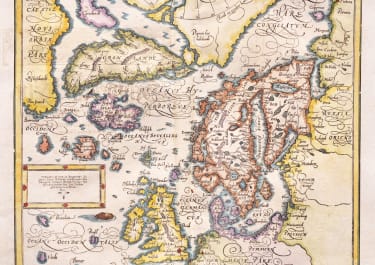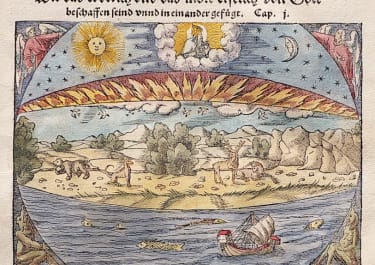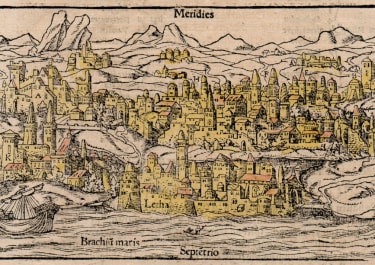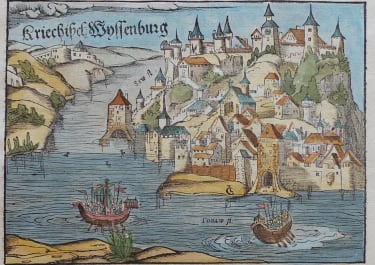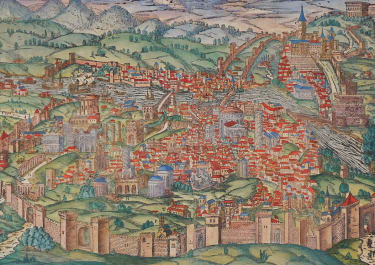VON DEN BRITANNISCHEN INSULIN
£295
This unusual woodblock map of the British Isles was first included in the 1578 edition of Munster's "Cosmography", according to Shirley, probably by the printer Heinrich Petri.
It is based on Munster's own map but with some important differences; there are fewer place names shown in the southern part of the country, north is oriented to the top of the page (Munster's map oriented north to the left), and, perhaps most obviously, Scotland slants eastwards in a style reminiscent of Ptolemy - even though this is a supposedly "new" and "modern" map.
Shirley suggests that this curious Scotland may not have been a reversion in geographical thinking, but instead the size of this page was just too small to include Scotland and the engraver found a practical solution.
Excellent hand colour in MINT condition.
REFERENCE: Shirley, Early Printed Maps Of The British Isles, 122.
code : M5417
Cartographer : Sebastian Munster
Date : 1588c Basel
Size : 17*28cms Shhet 33*21 cms
availability : Available
Price : £295
Originally a scholar studying Hebrew, Greek and mathematics, Sebastian Munster (1489-1552) eventually specialised in mathematical geography and cartography. It was this double ability - as a classicist and mathematician - that was to prove invaluable when Munster set himself to preparing new editions of Solinus’ “Memorabilia” and Mela’s “De Situ Orbis”, two classical descriptive geographies containing maps, and his own two greatest works, the “Geographia” and “Cosmographia”. These reflect the widespread interest in classical texts, which were being rediscovered in the fifteenth century, and being disseminated in the later fifteenth and sixteenth century, through the new medium of printing.
The “Geographia” was a translation of Ptolemy’s landmark geographical text, compiled in about 150 AD., illustrated with maps based on Ptolemy’s calculations, but also, in recognition of the increased geographical awareness, contains a section of modern maps. In the first edition of the “Geographia”, Munster included 27 ancient Ptolemaic maps and 21 modern maps, printed from woodblocks. Subsequent editions of the “Cosmographia” were to contain a vast number of maps and plans.
One consequence of Munster’s work was the impetus it gave to regional mapping of Germany, but Munster was also the first cartographer to produce a set of maps of the four continents on separate maps. Most importantly, through his books (the “Geographia” and “Cosmographia” alone ran to over forty editions in six languages), Munster was responsible for diffusing the most up-to-date geographical information throughout Europe.

